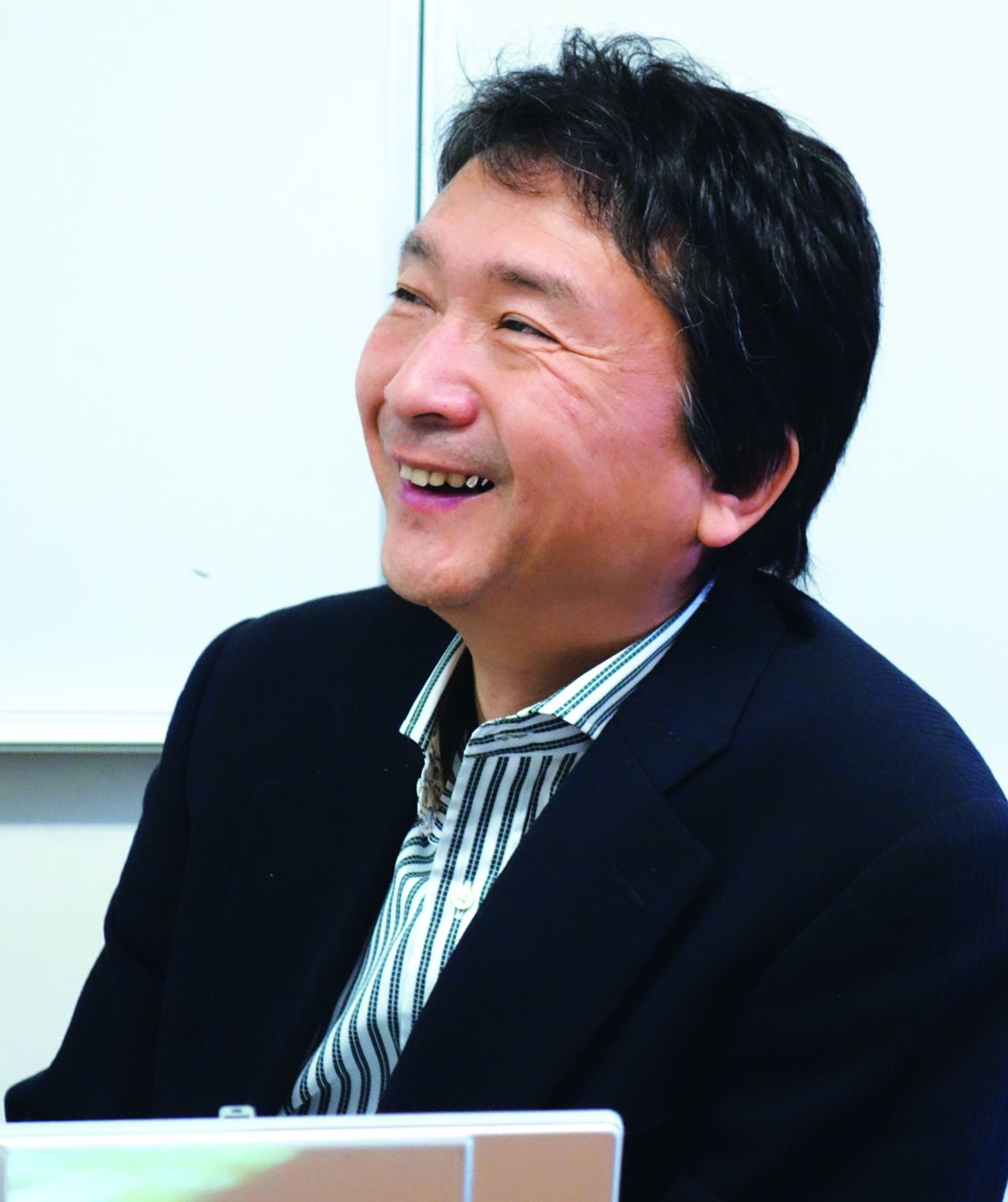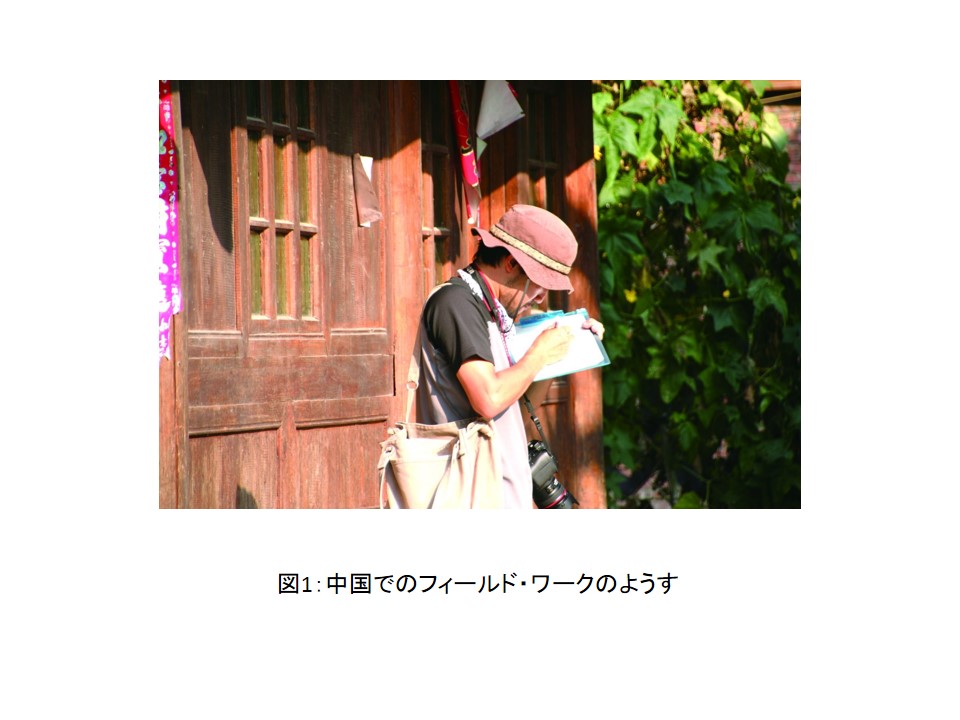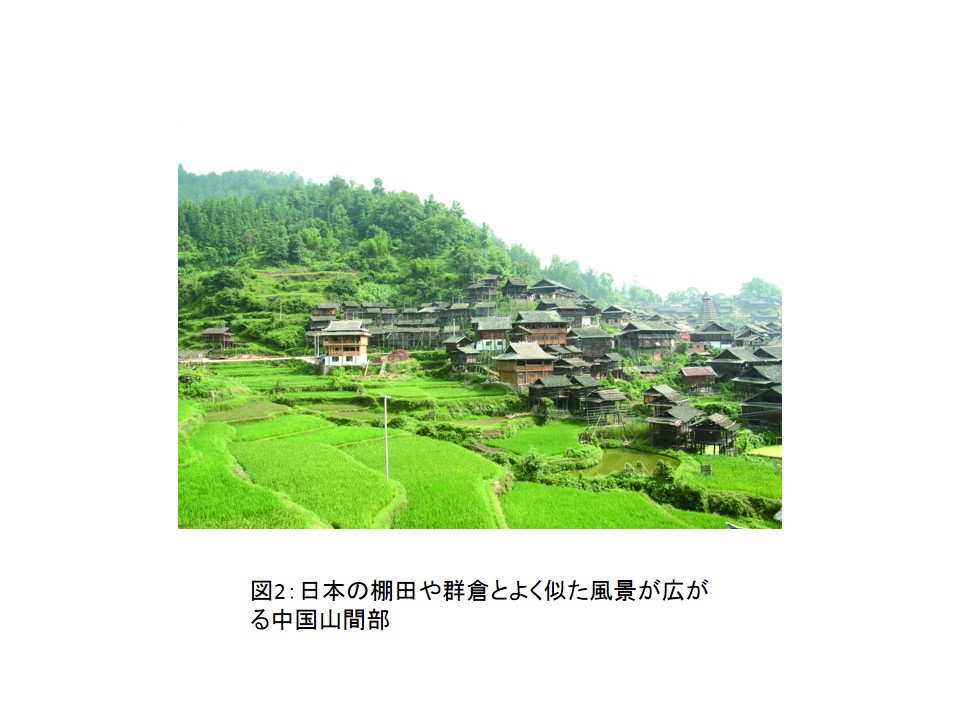キーワード:植物資源、木造建築、相互関係、生業、持続可能性
 環境破壊・都市化が進む現代社会で、私たちはどうしたら持続的な住環境を構築していけるでしょうか?この答えは、土地特有の材料や技術が集約された伝統的な民家・集落の中に、人類の知恵として埋め込まれているように見えます。
環境破壊・都市化が進む現代社会で、私たちはどうしたら持続的な住環境を構築していけるでしょうか?この答えは、土地特有の材料や技術が集約された伝統的な民家・集落の中に、人類の知恵として埋め込まれているように見えます。
建築についての多数の専門家が結集した「東アジアの伝統的民家・集落と環境」リサーチユニットでは、周辺の自然・社会環境との相互関係を持ちつつ形成される伝統的民家・集落に関する多面的な研究を行い、新たな街づくりに役立てるとともに、そこから見えてくる東アジアの文化の系譜の解明にも挑戦しています。
伝統的な住居から日本を捉え直す
持続的な住環境の構築が喫緊の課題となり、伝統的民家・集落の中に埋め込まれた人類の数々の知恵を学ぶ必要性がますます高まっているのですが、残念ながら現在では、伝統的な民家・集落に関わる研究が個別分散化してしまっているのが実情です。
筑波大学には、このような伝統的民家・集落に関する研究者が数多く結集しており、既に多くの共同研究の実績があります。
本リサーチユニットはこれらの専門家が構成する国内外でも稀有な研究グループです。私たちの研究対象は民家だけでなく、集落周辺にある山林や農業の状態の把握も含まれます(図1)。これらの調査過程で見つけ出した魅力的な資源を、その地域の街づくりへと反映させていくことも、私たちの研究目的の一つです。

古代からの建築文化の変遷について考える
東アジアの建築には、生活する人々の価値基準やそれを取り巻く文化的背景が反映されています。じつは、現在も東アジア地区で使われている建築や集落のなかには、日本の古い時代のそれらに酷似したものが存在しているのですが(図2)、当時の人々の間にどのような交流や、思想・文化的な相互作用があったのかは まだ分かっていません。
私たちはこの謎を解明するために、日本を含む東アジアにおける伝統的民家・集落・環境の相互関係についての学際的フィールド研究を実施しています。東アジア全域にわたる木造文化の歴史的展開過程に関する研究を深化させることで、東アジアの文化の源流が明らかになるのではな いか、と期待しています。

社会への貢献・実績
● 自然・社会環境との関係に着目した民家・集落史研究の再構築
● 現在残されている民家・集落の保全・再生に関する基礎的知見の獲得
● 持続可能な住環境形成手法に関する実務的知見の獲得
(取材:平成25年10月21日)
Genealogical Research on East Asian Culture and Environment through Architecture
Unit members : Hara Tadanobu Yamamoto Sachiko
Key words: botanical resources, wooden architecture, mutual relationship, livelihood, sustainability
How can we establish sustainable living environments as environmental destruction and urbanization proceed in modern society? The answers may be hidden in traditional housing and settlements, which have incorporated indigenous materials and technologies, as human wisdom.
The research unit “Traditional Houses, Settlement, and Environment in East Asia”, consisting of a number of architectural specialists, conducts research, using multilateral approaches, on traditional houses and settlements, which are developed while maintaining their mutually supportive relationships with surrounding natural and social environments, to generate findings that help develop new communities. Based on the results of these studies, the unit also conducts genealogical analyses of East Asian culture.
Rediscovery of Japan by focusing on traditional houses
As it is an urgent task to develop sustainable living environments, it has become increasingly important to learn from the wisdom of our ancestors incorporated in traditional houses and settlements. However, it is unfortunate that most studies on traditional housing and settlements are conducted separately and unsystematically.
A large number of researchers implement research on traditional housing and settlements in the University of Tsukuba, and their joint research has generated significant findings.
The research unit, consisting of those specialists, is known for its uniqueness in Japan and other countries. The research subjects are not confined to traditional houses. The research unit also conducts surveys on the status of forests and farmland in the vicinity of settlements (Figure 1). One of our research purposes is to help utilize valuable resources identified by such surveys for the development of towns within communities.

Figure 1: Field work in China
Research on changes in architectural culture since ancient times
Architectural structures in East Asia reflect the values of people and their cultural backgrounds. In fact, some of the existing buildings and settlements in East Asia are almost identical to those from ancient Japan (Figure 2). However, there are no findings on exchanges among those people as well as ideological and cultural interactions.
To clarify these areas, the research unit conducts multidisciplinary field research on relationships between traditional houses, settlements, and environments in Japan and other East Asian countries. We consider that the origin of East Asian culture can be clarified by conducting rigorous research on the process of historical development of wooden architectural culture in overall East Asian area.

Figure 2: Fields and houses in a mountainous area of China that resemble Japanese terraced paddy fields and groups of warehouses
Social contributions and achievements
● Acquisition of basic knowledge of the conservation and restoration of existing traditional houses and settlements
● Acquisition of basic knowledge of methods for developing sustainable living environments
